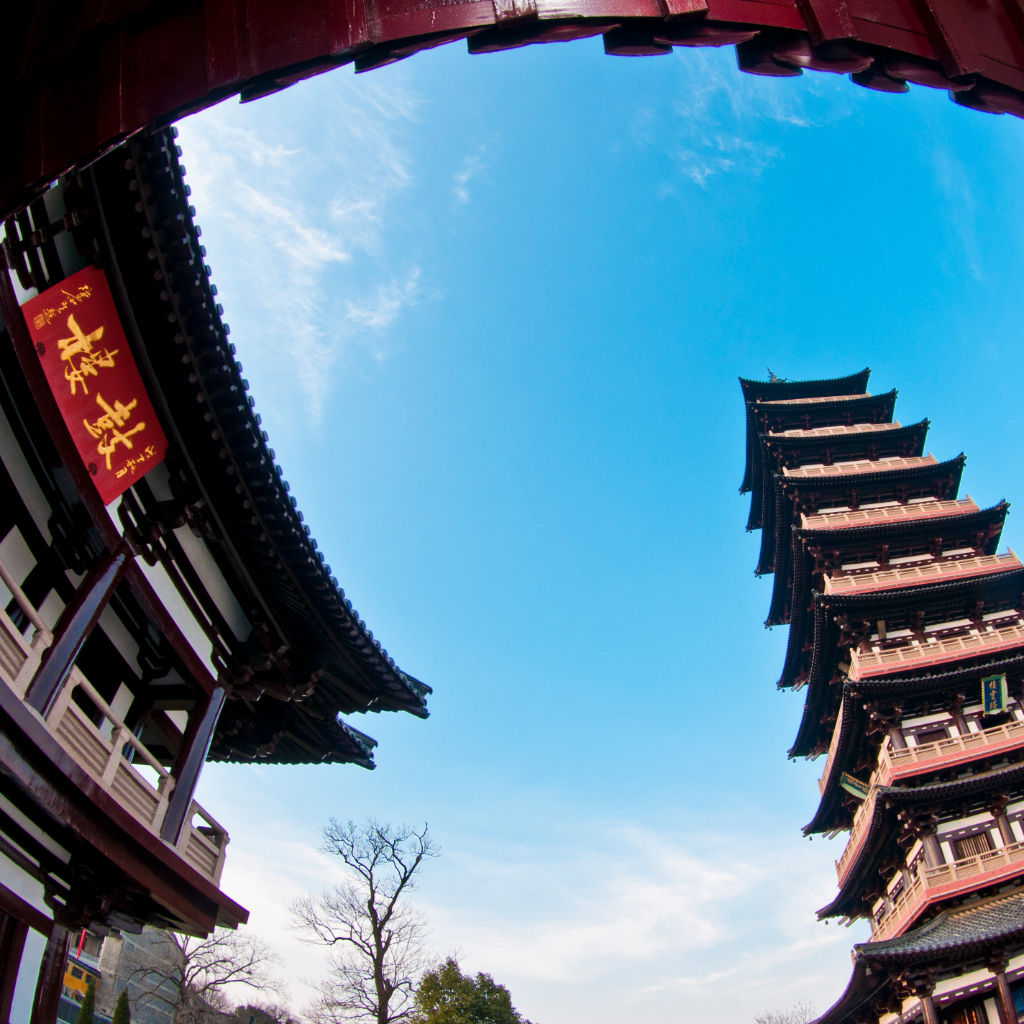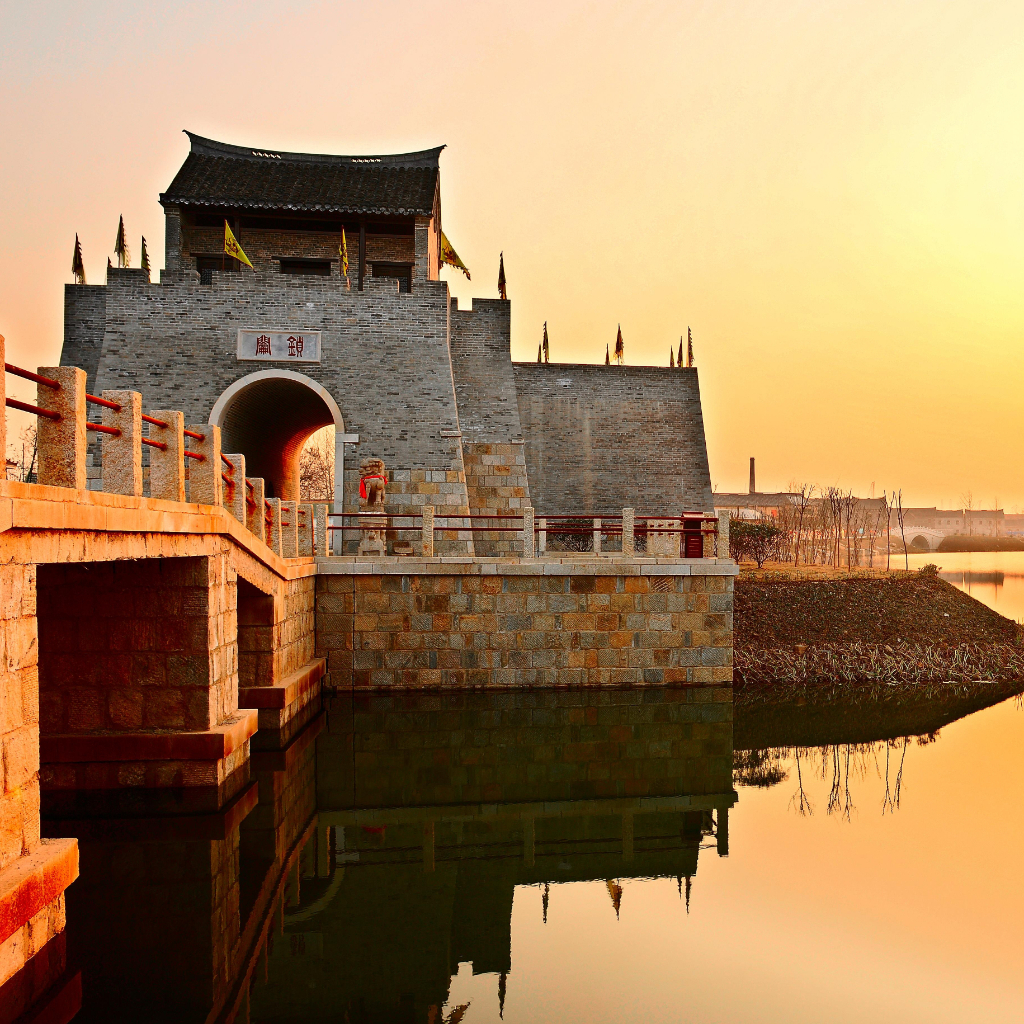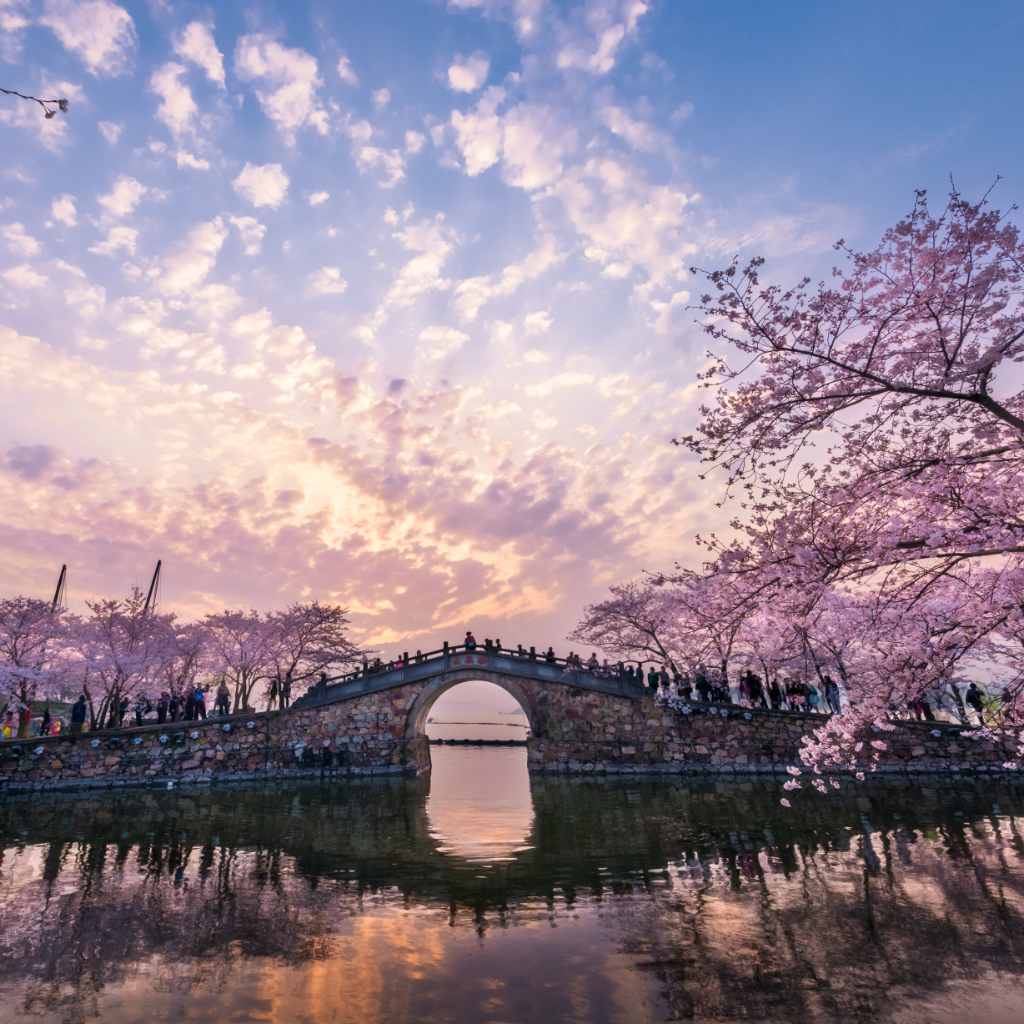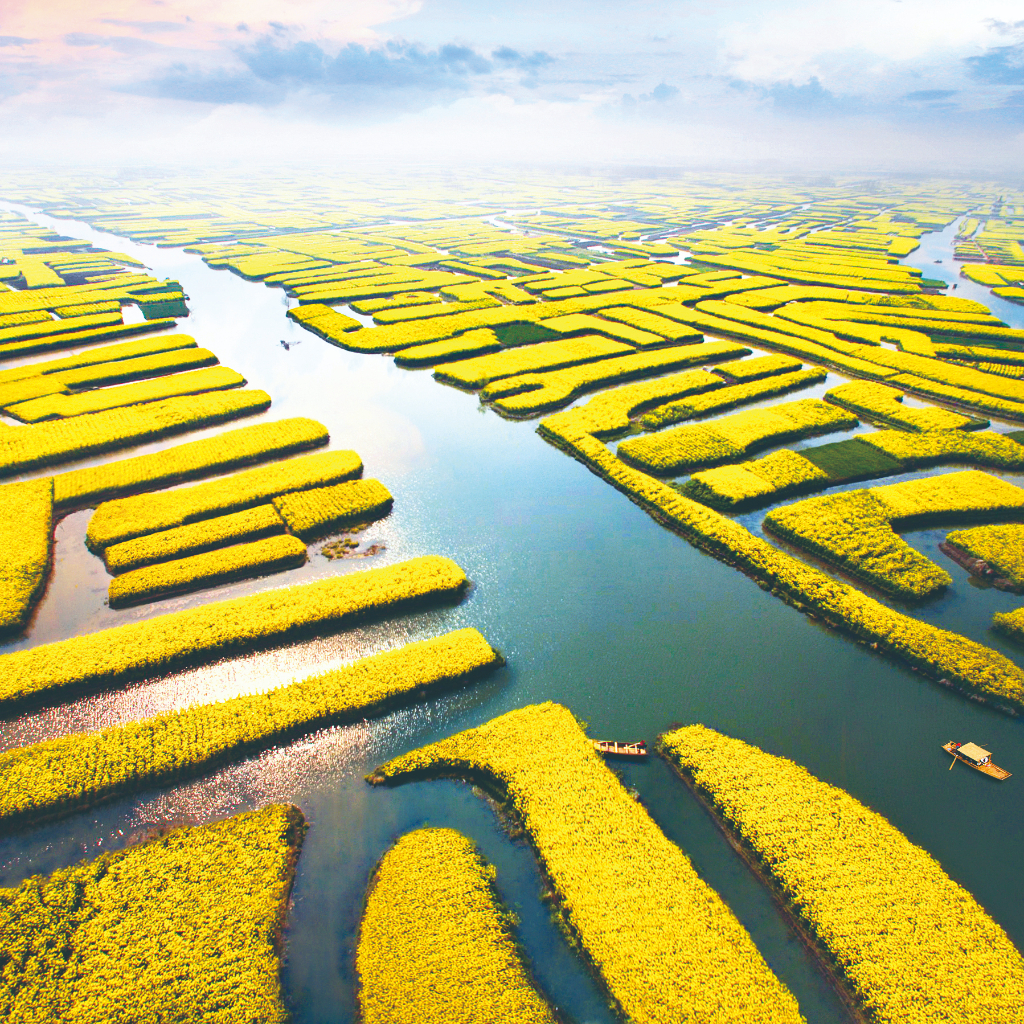Landscape Attractions
[/vc_column_text][vc_separator color=”vista_blue”][/vc_column][/vc_row][vc_row][vc_column width=”1/3″][vc_single_image image=”1464″ img_size=”large”][/vc_column][vc_column width=”2/3″][vc_column_text]Jinshan Mountain Scenic Area
Jinshan Mountain, Jiaoshan Mountain and Beigu Mountain are together known as the “Three Peaks of Jingkou”. The most famous site on the mountain is the Jinshan Temple, which is built on mountain terrain and blends in with its surroundings. Those who visit Jinshan are attracted by the story of “The flooding of Jinshan” in the White Snake legend, proving the long-lasting charm of this local folk tale.[/vc_column_text][/vc_column][/vc_row][vc_row][vc_column width=”1/3″][vc_single_image image=”1465″ img_size=”large”][/vc_column][vc_column width=”2/3″][vc_column_text]
Jiaoshan Mountain
Jiaoshan Mountain is located in the middle of the Yangtze River, which is accessible via a boat ride from Xiangshan mountain. There is a temple located on the mountain secluded within a forest. Jiaoshan is known as “the mountain of calligraphy” acknowledged by the Qianlong Emperor on a monument. There are numerous monuments of calligraphy engravement well-kept here.[/vc_column_text][/vc_column][/vc_row][vc_row][vc_column width=”1/3″][vc_single_image image=”1466″ img_size=”large”][/vc_column][vc_column width=”2/3″][vc_column_text]
Maoshan Mountain
Maoshan is the birthplace of the Taoist Shangqing faction. At the top of the hill lies the Jiuxiao Wanfu Palace. A magnificent place built on the mountains. There are nine peaks, eighteen springs, twenty-six caves and twenty-eight pools. Maoshan was also listed by Mao Zedong as one of the six base locations for resistance during the anti-Japanese war period.[/vc_column_text][/vc_column][/vc_row][vc_row][vc_column][vc_column_text]
Cultural Attractions
[/vc_column_text][vc_separator color=”vista_blue”][/vc_column][/vc_row][vc_row][vc_column width=”1/3″][vc_single_image image=”1467″ img_size=”large”][/vc_column][vc_column width=”2/3″][vc_column_text]Beigu Mountain Scenic Area
Beigu Mountain is one of the most popular scenic spots in Zhenjiang. Most of the scenic spots on the mountain are related to the history of the Three Kingdoms period. Therefore, it has become a dream place to visit for the fans of “Three Kingdoms Culture”. You can also view the beautiful scenery of the Yangtze River on the mountain.[/vc_column_text][/vc_column][/vc_row][vc_row][vc_column width=”1/3″][vc_single_image image=”1468″ img_size=”large”][/vc_column][vc_column width=”2/3″][vc_column_text]
Baohua Mountain National Park
As the “first mountain of the Vinaya school in Buddhism”, the Longchang Temple in the mountain has a history of more than 1,500 years. The Qianhua Village at the foothill is a well-preserved village. One can enjoy performances at the Huashan Temple Fair during the Spring Festival.[/vc_column_text][/vc_column][/vc_row][vc_row][vc_column width=”1/3″][vc_single_image image=”1469″ img_size=”large”][/vc_column][vc_column width=”2/3″][vc_column_text]
Xijindu Historical & Cultural District
Ancient houses are found in the Xijindu historical and cultural district. The streets are covered with old quartzite on both sides of the traditional houses and walls of green bricks. There are small stone towers built in the Yuan Dynasty, including small towers, hillside buildings, transit pavilions, and some tiny scenic spots. There are various shops, teahouses and craft shops on both sides of the booth.[/vc_column_text][/vc_column][/vc_row][vc_row][vc_column][vc_column_text]
Cultural Experience
[/vc_column_text][vc_separator color=”vista_blue”][/vc_column][/vc_row][vc_row][vc_column width=”1/3″][vc_single_image image=”1470″ img_size=”large”][/vc_column][vc_column width=”2/3″][vc_column_text]The Three Odds of Zhenjiang
“The vinegar will never expired, the meat is not to be eaten as a dish, and the pot lid is cooked inside the pot” is a famous local jingle. “Never expired” represents the quality of aged vinegar; “Not to be eaten as a dish” means the crystal pork shoulder meat can be used as a banquet main dish or be diced to serve as breakfast; “Pot lid is cooked” means the pot covered with a lid which is used to cook the “jumping noodles”.[/vc_column_text][/vc_column][vc_column][vc_column_text]
Food & Beverage
[/vc_column_text][vc_separator color=”vista_blue”][/vc_column][/vc_row][vc_row][vc_column width=”1/3″][vc_single_image image=”1471″ img_size=”large”][/vc_column][vc_column width=”2/3″][vc_column_text]Crystal Meat
Crystal meat is a famous dish in Zhenjiang as well as one of the “three odds”. Legend has it that in ancient times, a chef of Jiuhai Street Hotel used niter instead of salt to pickle trotters accidentally. Surprisingly, the meat was red inside with white skin after cooked, looked smoothly crystal after brined and frozen, rich in fragrance, and full of lingering tastes. It will be more delicious if you eat it with shredded ginger and balsamic vinegar.[/vc_column_text][/vc_column][/vc_row][vc_row][vc_column width=”1/3″][vc_single_image image=”1472″ img_size=”large”][/vc_column][vc_column width=”2/3″][vc_column_text]
Pot Noodles
Commonly known as one of the “three odds”. It is prepared with Zhenjiang’s special Hengshun soy sauce, plus a dozen of seasonings such as cinnamon, aromatic herb, star anise, and others. Noodles are soft but firm, and are served with soup.[/vc_column_text][/vc_column][/vc_row][vc_row][vc_column width=”1/3″][vc_single_image image=”1473″ img_size=”large”][/vc_column][vc_column width=”2/3″][vc_column_text]
Maoshan Old Goose
Maoshan Goose is a classic dish that must be eaten in Zhenjiang, named after Maoshan Mountain. Maoshan goose has been famous since ancient times. With local grass goose as main ingredient, the dish is developed and innovated based on century-old traditional salting technology, with tender and juicy taste.[/vc_column_text][/vc_column][/vc_row][vc_row][vc_column][vc_btn title=”Zhenjiang Booklet Download” style=”gradient” gradient_color_2=”vista-blue” align=”center” link=”url:https%3A%2F%2Ftravellutionmedia.com%2Feb%2Fzhenjiangminibooklet.pdf||target:%20_blank|”][/vc_column][/vc_row]



